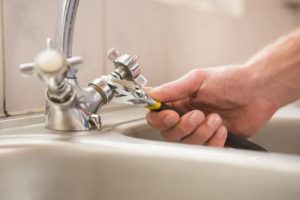Tips for the plumbing system
5 tips for plumbing system that everyone should know
Knowing basic plumbing skills can save you a lot of money and prevent serious water damage. Some jobs require professional help, but these five basic tips for plumbing can help anyone in the event of a sudden plumbing emergency:
1. How to turn off the water in the house
 A burst pipe or similar plumbing emergency can cause a lot of damage to your property. As a rule, the faster you can turn off the water, the less serious the damage will be. Take note of where the water shut-off valve is located in your home and practice turning it off. In some homes, the valve is located in the garage. Share this basic skill with everyone in the house, even children can manage the activity. Turning off the water should be the first step every time a water leak occurs.
A burst pipe or similar plumbing emergency can cause a lot of damage to your property. As a rule, the faster you can turn off the water, the less serious the damage will be. Take note of where the water shut-off valve is located in your home and practice turning it off. In some homes, the valve is located in the garage. Share this basic skill with everyone in the house, even children can manage the activity. Turning off the water should be the first step every time a water leak occurs.
2. How to fix a leaking tap
Many leaky taps can be fixed by replacing the washing machine – a simple part of your local hardware store that will only cost you pennies. First, try to tighten the tap to the base with a wrench. In case that doesn’t work, you can try replacing the washer inside the tap. Sometimes these fixes don’t work, and you will find that installing a new tap might be for the best. Most new taps come with installation kits that will guide you through the plumbing replacement process. This can also happen to kitchen taps.
3. How to stop a running toilet
In fact, a working toilet is usually the result of closing or sealing the valve inside the tank. Firstly, shut off the water to the toilet with the shut-off valve located on the pipe behind the cup. Check to see if the chain is broken or needs to be adjusted to the right length. If the chain is not the culprit, check the arm that holds it. The plumber may need to replace the tongue and arm. Again, this is a relatively simple and inexpensive solution.
4. How to unlock a connected toilet
You should always have a plunger on hand in case a toilet gets you. Use the plunger carefully when the water level inside the toilet has dropped as low as possible. Keep old towels handy in case of overflow during plumbing repairs. Rinse thoroughly after immersion: it may be necessary to repeat the process a few times to eliminate it completely.
5. How to clear a slow or interrupted drain
You can use drain cleaning chemicals to help clean slower or clogged drains. If there is no standing water in the tub or sink, you can try a more natural approach: pour a little baking soda down the drain followed by vinegar and then boiling water. In some cases, it may be necessary to remove clogs such as hair from the clogged drain – special tools are available to help you do this. If waste disposal is involved, use extreme caution. First turn off the power supply for disposal, then use pliers or another tool to reach inside and look for the clogs. In some cases, disposal may need to be replaced.
These basic tips for plumbing can help you avoid water damage in the event of a plumbing emergency, as well as save a lot of wasted money on your water bill. Take a few minutes to familiarize yourself with how the toilet and tap work. If you need to do a plumbing repair quickly later, you already know what to look for. Call Sutton Plumber at 02080894359.
